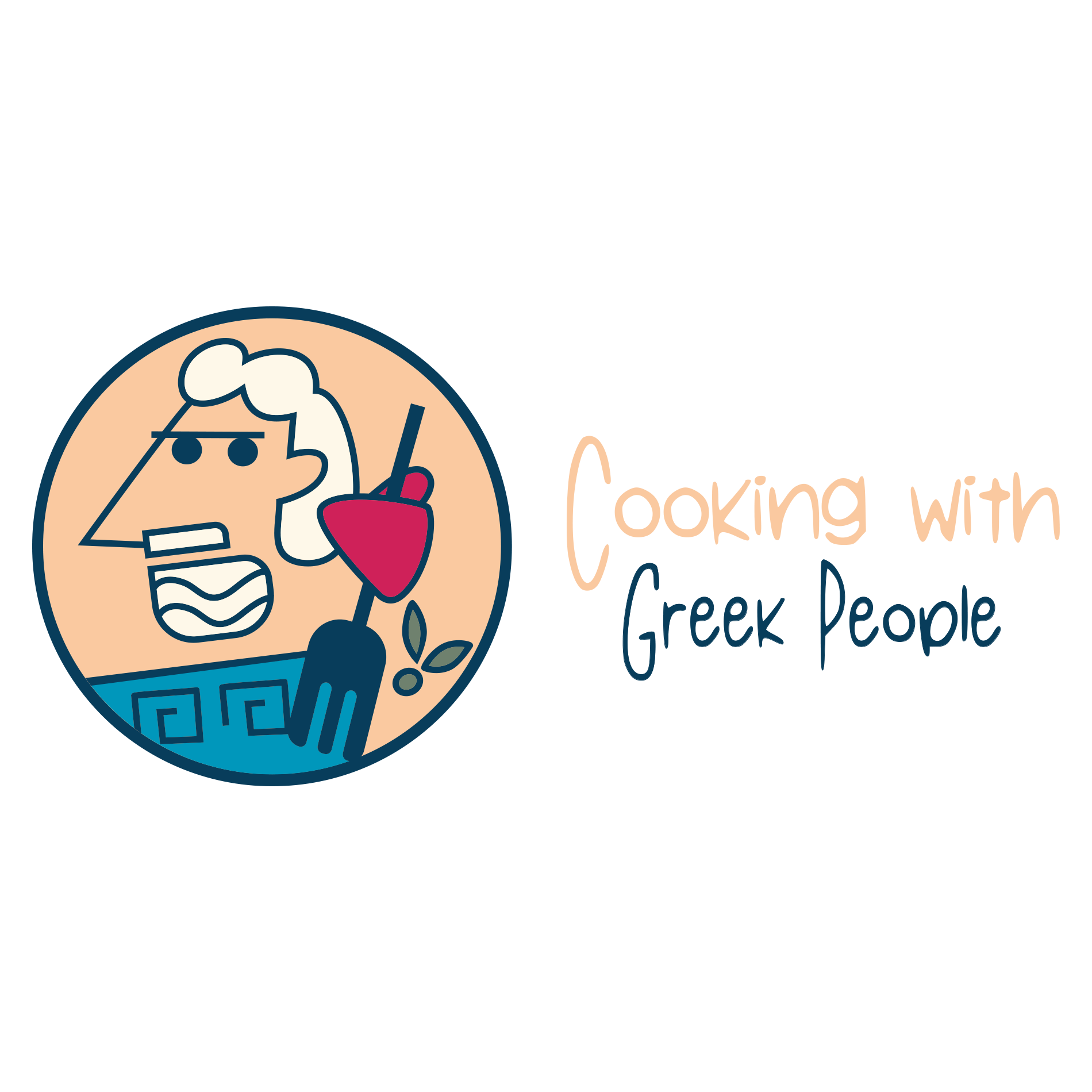Greek Christmas Traditions and Customs
Overview of Greek Christmas Traditions and Customs
Greek Christmas celebrations are a vibrant and festive affair that lasts for 14 days, starting from Christmas Eve and culminating on Epiphany.One interesting aspect of Greek Christmas traditions is the introduction of Christmas trees to Greece in 1833 by the Bavarian Prince Otto, which replaced the previous custom of decorating small boats. This change marked a shift in the way Greeks celebrated Christmas, as the trees became a symbol of the holiday season. The Christmas tree quickly gained popularity and became an integral part of Greek Christmas decorations. However, even with the presence of Christmas trees, the tradition of decorating small boats still holds significance in some areas, particularly in coastal regions.For example, in the village of Vlychada on the island of Santorini, locals decorate small boats with lights in honor of Saint Nicholas, the patron saint of sailors.


Another unique tradition in Greek Christmas celebrations is the exchange of gifts. While many cultures exchange gifts on Christmas Day, Greeks have a slightly different approach. In Greece, gifts are exchanged on New Year’s Day rather than Christmas Day. This tradition is deeply rooted in Greek culture and is associated with Agios Vasilis, meaning Saint Basil, who is the Greek counterpart of Santa Claus.Saint Basil is believed to bring gifts to children and families on New Year’s Day. The association with Saint Basil is so strong that New Year’s Day is often referred to as “St. Basil’s Day” in Greece. However, it is worth mentioning that some Greeks also exchange gifts on Christmas Day, following the more widespread tradition.
Traditional Greek Christmas Foods
Greek Christmas is a time for indulging in delicious traditional foods. The main dish varies across different regions of Greece, but pork is the most commonly enjoyed. In some areas, stuffed cabbage is also a popular choice. For example, in the region of Thrace, people prepare a dish called “lahanodolmades,” which consists of cabbage leaves stuffed with ground pork, rice, and herbs. This dish is often served as part of the Christmas feast, alongside other traditional Greek dishes.
In addition to the regional variations, there are certain traditional Christmas foods that are enjoyed throughout Greece. One iconic Christmas food is the Christ bread, known as Christopsomo, which holds a special place in Greek Christmas traditions. This bread is shaped in a round loaf with a cross made of dough in the center, symbolizing the birth of Christ. The preparation of Christopsomo is a ritual practiced with great reverence, and the bread is often decorated with intricate symbols that represent various aspects of the holiday season, such as prosperity, good fortune, and the birth of Jesus. Another popular Christmas food in Greece is the Vassilopita, a cake-like sweet bread associated with the feast of Agios Vassileios, or Saint Basil. The Vassilopita is traditionally cut on New Year’s Day, and a hidden coin is placed inside the bread. The one who finds the coin is believed to have good luck for the year ahead.
Greek Christmas Carols and Music
Music plays a significant role in Greek Christmas celebrations. Greek Christmas carols, known as kalanda, are an essential part of the festive season. These carols are performed on Christmas Eve and New Year’s, filling the air with joyous melodies. The tradition of Greek Christmas carols dates back centuries and has its roots in both religious and cultural practices. For instance, in the village of Kalarites in the region of Epirus, locals have preserved the tradition of singing ancient Christmas carols called “kotilies.” These carols are sung by a group of men dressed in traditional costumes, and their haunting melodies echo through the village, creating a magical atmosphere.
The tradition of Greek Christmas carols goes beyond mere entertainment. It is also a way to spread festive cheer and foster a sense of community spirit. One unique aspect of Greek Christmas carols is the practice of children going from house to house, singing carols, and receiving rewards for their performances. This tradition, known as “kalanda,” is particularly popular in rural areas and small towns. Children form groups and visit their neighbors, singing carols and wishing them good fortune for the coming year. In return, they are given treats, such as sweets and small change, as a token of appreciation for their musical talents.
Greek Christmas Decorations
Greek Christmas decorations add a touch of magic and beauty to the festive season. Christmas trees have become an integral part of Greek Christmas celebrations since their introduction in 1833. However, before that, it was customary to decorate small boats instead of trees. The tradition of decorating boats is still observed in some coastal regions of Greece, serving as a reminder of the country’s maritime heritage. For example, in the village of Vlychada on the island of Santorini, locals decorate small boats with lights to honor Saint Nicholas, who is the patron saint of sailors.
In addition to Christmas trees and boats, another important decoration in Greek Christmas traditions is the Christ bread, or Christopsomo. This bread is intricately decorated with symbols that reflect the holiday season and its significance. The symbols can vary but often include representations of the cross, the nativity scene, and other spiritual and festive elements. The Christ bread is displayed prominently on the Christmas table, serving as a centerpiece and a symbol of the holiday season.
Greek Christmas Gift-Giving Customs
Gift-giving is an integral part of Greek Christmas traditions, but unlike in many other cultures, Greeks exchange gifts on New Year’s Day instead of Christmas Day. However, it is worth noting that some Greeks also give gifts on Christmas Day. The association of gift-giving with Agios Vasilis, the Greek counterpart of Santa Claus, is particularly strong on New Year’s Day. Agios Vasilis is believed to bring gifts to children and families, and his arrival is eagerly anticipated by both young and old. It is common for families to gather on New Year’s Day and exchange gifts, adding to the festive atmosphere of the holiday season.
A unique tradition in Greek gift-giving is the Vassilopita, a sweet bread with a hidden coin. As mentioned earlier, the Vassilopita is traditionally cut on New Year’s Day, and the one who finds the coin has good luck for the year ahead. This tradition adds an element of excitement to the gift-giving process, as everyone eagerly awaits their turn to discover if they are the lucky recipient of the hidden coin.
Greek Christmas Religious Ceremonies and Traditions
Epiphany, also known as Theophany, holds great significance in Greek Christmas traditions. Celebrated on January 6th, it marks the baptism of Jesus in the Jordan River. Epiphany is a solemn and sacred occasion, and it is observed with various religious ceremonies and traditions throughout Greece. One of the most notable ceremonies during Epiphany is the Blessing of Water. This ceremony takes place near bodies of water, such as rivers, lakes, or the sea. A cross is thrown into the water, and young men dive in to retrieve it. The person who retrieves the cross is believed to be blessed for the whole year. Purification of the soul and the renewal of faith.
Another significant Epiphany tradition in Greece is the practice of priests blessing homes with holy water. On Epiphany, priests visit homes and sprinkle holy water in every room, including bedrooms, kitchens, and living areas. This ritual is believed to ward off mischievous hobgoblins, known as kallikantzari, who are believed to rise from underground during the 12 days of Christmas. According to Greek folklore, these mythical creatures cause mischief and bring bad luck to households. The blessing of homes with holy water is believed to protect families from their mischievous antics.
Greek Christmas Customs and Folklore
Greek Christmas customs are steeped in rich folklore and passed down through generations. These customs reflect the unique cultural heritage of Greece and add a sense of enchantment to the holiday season. One intriguing custom is the burning of Christmas wood, known as Christoxylo, to keep Christ warm and protect homes from mythical goblins. This custom originated from the belief that Christ was born in a cold manger and needed to be kept warm. In some regions, families gather around a bonfire and burn a piece of wood, symbolizing the warmth and protection of Christ. This tradition also carries a deeper symbolic meaning, emphasizing the importance of keeping Christ’s spirit alive during the holiday season.
Another unique tradition in Greek Christmas customs is the breaking of a pomegranate on New Year’s Day. This tradition is believed to bring good luck and abundance for the coming year. The pomegranate is a symbol of fertility, prosperity, and new beginnings in Greek culture. Families gather around the table and take turns breaking the pomegranate, releasing its vibrant red seeds and savoring the sweet and tangy taste. As they do so, they express their hopes and wishes for the year ahead, creating a sense of unity and optimism for the future.
Greek Christmas Traditions in Different Regions of Greece
Greek Christmas traditions exhibit regional variations, with each area adding its own unique touch to the celebrations. These regional variations highlight the diverse cultural tapestry of Greece and showcase the rich heritage of each locality. In Crete, for example, people have preserved the tradition of lighting bonfires in the courtyards of their homes on Christmas Eve. The bonfires symbolize the light of Christ’s birth and create a warm and inviting atmosphere. In the Ionian Islands, locals have their own distinctive customs, such as the tradition of the “Ragoutsaria.” This festive parade takes place on New Year’s Day, where groups of people wear traditional costumes and masks, dancing and singing through the streets. The Ragoutsaria is a celebration of the new year and is believed to bring good luck and prosperity.
Similarly, the mainland of Greece has its own set of regional traditions that reflect the cultural diversity of the country. In the region of Macedonia, for instance, a tradition called “Klidonas” takes place on New Year’s Eve. People gather around a bonfire and throw objects into the fire, symbolizing the cleansing of the past year and the anticipation of a fresh start. This tradition is accompanied by singing and dancing, creating a joyful and festive atmosphere. These regional variations in Greek Christmas traditions add depth and richness to the overall tapestry of Greek culture and highlight the importance of preserving local customs and heritage.
Modern Celebrations and Adaptations of Greek Christmas Traditions
In modern times, Greek Christmas traditions have evolved and adapted to contemporary lifestyles. While the core customs and rituals remain intact, there have been additions and changes that reflect the changing times. For example, alongside traditional Greek dishes, modern variations and international cuisines have found their way into Greek Christmas feasts. Families may incorporate dishes from other cultures into their Christmas menu, creating a fusion of flavors and culinary traditions. This adaptation reflects the multicultural nature of modern Greek society and adds a contemporary twist to the traditional Christmas feast.
Furthermore, the importance of preserving and celebrating Greek cultural heritage has led to renewed interest in traditional customs. Efforts are being made to revive and promote ancient traditions that were at risk of being forgotten. Festivals, workshops, and cultural events are organized to educate younger generations about the significance of Greek Christmas traditions and to ensure that these cherished customs continue to thrive. It is through these initiatives that the spirit of Greek Christmas is kept alive and the cultural identity of Greece is preserved for future generations.
For example, in major cities like Athens and Thessaloniki, Christmas markets have become a popular attraction during the holiday season. These markets offer a wide variety of traditional Greek products, handmade crafts, and delicious street food. They provide a platform for local artisans and producers to showcase their skills and products, supporting small businesses and promoting Greek cultural heritage. The Christmas markets also serve as a gathering place for locals and tourists, fostering a sense of community and celebrating the joyous spirit of the holiday season.
Conclusion
Greek Christmas traditions and customs are a rich tapestry of cultural heritage, steeped in symbolism and meaning. From the unique decorations and delightful foods to the joyous carols and gift-giving traditions, Greek Christmas is a time of celebration and community. The significance of Epiphany and the rituals associated with it further enhance the cultural depth of these traditions. Greek Christmas is not just a holiday; it is a cherished expression of Greek identity and a testament to the enduring spirit of the Greek people. As Greece continues to embrace its cultural heritage and adapt to modern times, the traditions and customs of Greek Christmas will continue to evolve, ensuring that the magic and beauty of this special season are preserved for generations to come.
Where can I find authentic Greek dessert recipes?
Answer: For a treasure trove of authentic Greek dessert recipes, visit Cooking with Greek People on YouTube. Here you’ll find traditional recipes with modern twists, shared by passionate Greek chefs.
For more on Greek culinary arts and the fusion of tradition with modern tastes, follow the writings of Bob Stavrou at Cooking with Greek People.



